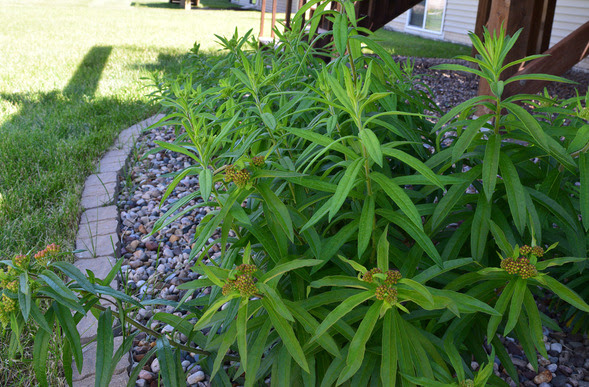CLEAR LAKE – Th eIowa Department of Natural Resources advises that if you enjoy eating apples, peaches, blueberries, tomatoes, squash and more, thank a bee. Or, better yet, plant some pollinator friendly native plants in a pot, or flower bed or garden and support the local bees and butterflies.
National Pollinator Week is June 17-23.
“If you live in a neighborhood, look at what your neighbors have and try to build on that,” said Stephanie Shepherd, wildlife biologist with the Iowa Department of Natural Resources Wildlife Diversity program. “Look at it on the landscape level. If everyone added just a few pollinator plants, think of the impact that could have on the bee and butterfly community.”
Native species are preferred because they are adapted for Iowa’s environment and are familiar to the local butterfly and bee community. Adding plants to a section of the yard will be much more beneficial than no-mow May. Planting singles species in groups, and groups of plants near each other will benefit certain types of pollinators that will often focus on one plant type at a time when gathering food. Be sure to include species diversity and blooming diversity so something will be in bloom from April through October.
“Bigger plantings are always better, but simply replanting a wet part of the yard to native plants, or putting natives in the rock garden around your deck can benefit pollinators,” she said. “And don’t just get stuck in the flower garden! Landscaping with certain kinds of shrubs and trees can really raise the benefits for pollinators. Small steps, when added together, can have a huge impact.”
Cherry trees and willows flower really early in the spring – and willows thrive in wetter soils. Basswood is a popular nectar producing option for shady areas.
Information on native plants is available from the Tallgrass Prairie Center at UNI at www.plantiowanatives.com or from the Iowa DNR at https://www.iowadnr.gov/
Five ways to support the local pollinators
- Reduce the amount of lawn that you have! Lawn, even a messy one with weeds, is never going to be as beneficial for pollinators as an area of diverse flowering plants, or better yet, a little wild patch of prairie.
- Don’t use pesticide, especially insecticide. Or if you do, use it in as targeted a manner as possible. Most insecticides are not formulated to only impact the pest insect eating your plants, but will negatively impact all insects visiting the plant, including pollinators! Some of those insects eating your plants (think caterpillars) will turn into pollinators, so being discerning about what is truly a pest and planning for some damage to your plants is a good strategy.
- Flowers, all kinds, everywhere! You want flowers that provide nectar, you want flowers that provide pollen, you want flowers (and grasses) that caterpillars like to munch on, you want flowers that bloom spring, summer and fall. The best way to meet these needs is to plant a lot of different kinds, and not just herbaceous plants. Shrubs and trees can also be valuable food sources! Have mostly shade? That’s okay, too! There are many plants that thrive in shade that are also important for many pollinators.
- Use mostly native plants. These are hardy (and beautiful) plants that are adapted to our environment and are most familiar to our pollinators.
- Where do our pollinators go in winter? Often nowhere! They stay right on your property and in your garden. Bumble bee queens hibernate shallowly underground and many other bees, as well as caterpillars, and fireflies, overwinter in the leaf litter, in tall grass or on the plants themselves – burrowed into the stem perhaps. The best plan is to have an area that you just let be! But if that’s not possible, save your cleanup, for at least some areas until things warm up in spring.
(TOP PHOTO via Iowa DNR)




